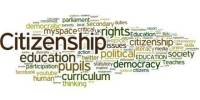An indirect election, also known as hierarchical voting, is one in which voters do not choose directly among candidates or parties for an office (as in a direct voting system), but rather elect people who then choose candidates or parties. It is one of the oldest types of elections and is used by many countries for heads of state (such as presidents), cabinets, heads of government (such as prime ministers), and/or upper houses. It is also used for some supranational legislatures.
Voters in this type of electoral system do not directly elect leaders or make major policy decisions; instead, they elect individuals to represent their interests and make decisions on their behalf. Positions that are indirectly elected may be chosen by a permanent body (such as a parliament) or by a special body convened solely for that purpose (such as an electoral college).
In most cases, the indirect election process consists of several stages. First, citizens vote to elect representatives, which is usually done through general elections. These representatives can be elected at several levels, including local, regional, and national. Depending on the country’s political structure, the number of representatives and the specific rules may differ.
The body that controls the executive branch (such as a cabinet) is almost always indirectly elected. Most parliamentary systems have cabinets; the public elects parliamentarians, who then elect the cabinet. Upper houses are frequently elected indirectly, particularly in federal republics, by the corresponding lower house or cabinet. Similarly, supranational legislatures can be indirectly elected by legislatures or executive governments in constituent countries. The electoral college or the president run the indirect democracy.
When representatives are elected, they form a legislative body, such as a parliament or a congress, where they debate and vote on laws and policies. They also have other governmental responsibilities, such as overseeing the executive branch and representing the interests of their constituents. The elected officials are expected to reflect the will and interests of the people who voted for them and make decisions in their best interests.
Many countries around the world use indirect election systems, including democracies with parliamentary or presidential systems. Because it allows for efficient decision-making and representation, this system is frequently regarded as a practical approach to governing large populations. It allows citizens to participate in the political process while delegating day-to-day governance responsibilities to elected representatives.
However, indirect voting systems are not without flaws. Some argue that they can create a schism between elected representatives and the electorate because representatives may not always accurately represent the people’s views and preferences. Critics also contend that the process’s indirect nature can lead to the concentration of power in the hands of a few individuals or political parties.
In general, an indirect election system is one in which citizens elect representatives to make decisions on their behalf. It is a common type of democracy that strikes a balance between the need for effective governance and popular participation.
















